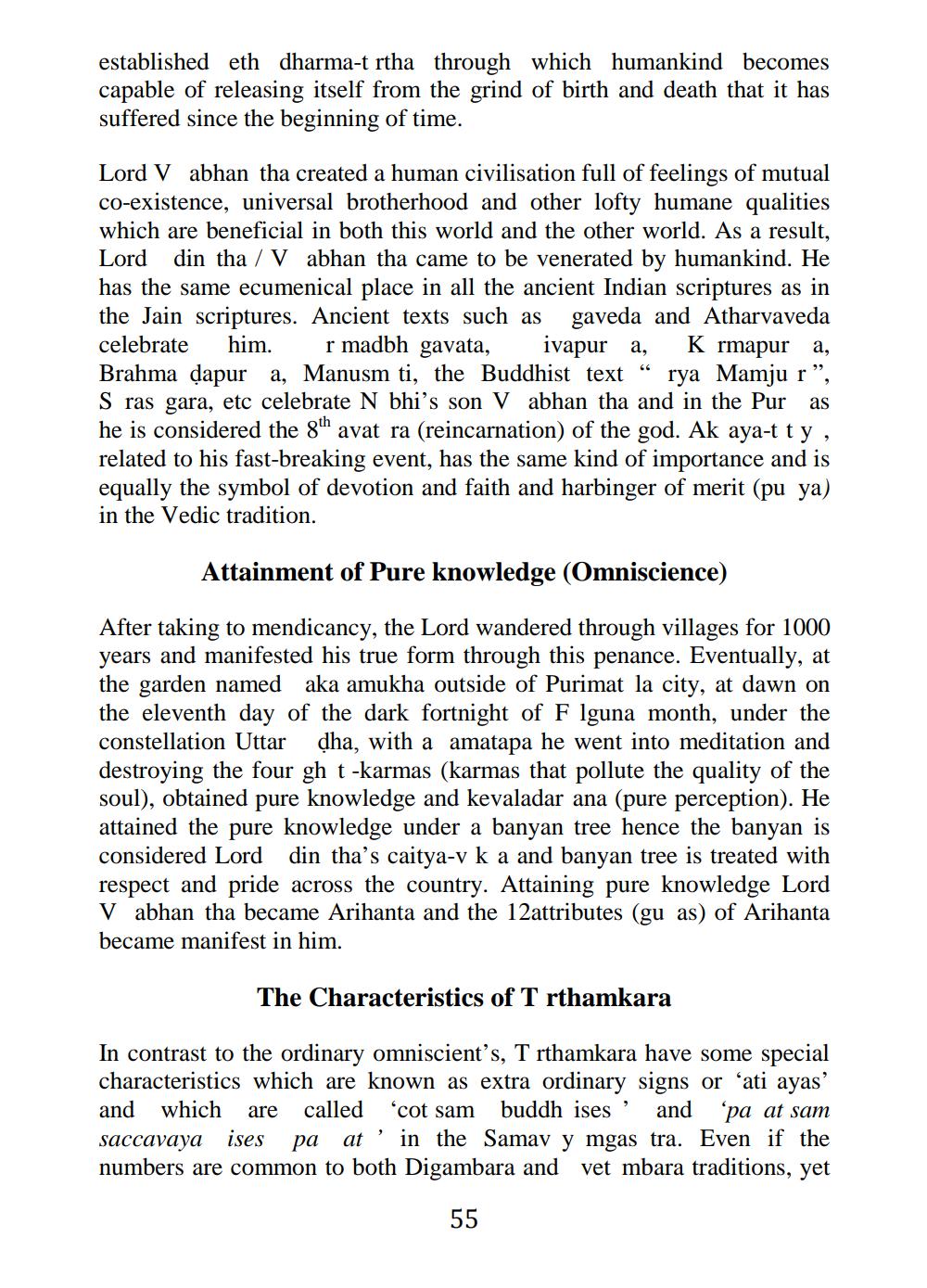________________
established eth dharma-t rtha through which humankind becomes capable of releasing itself from the grind of birth and death that it has suffered since the beginning of time.
Lord V abhan tha created a human civilisation full of feelings of mutual co-existence, universal brotherhood and other lofty humane qualities which are beneficial in both this world and the other world. As a result, Lord din tha / V abhan tha came to be venerated by humankind. He has the same ecumenical place in all the ancient Indian scriptures as in the Jain scriptures. Ancient texts such as gaveda and Atharvaveda celebrate him. r madbh gavata, ivapura, Krmapura, Brahma dapura, Manusm ti, the Buddhist text“ rya Mamju r", S ras gara, etc celebrate N bhi's son V abhan tha and in the Puras he is considered the 8th avat ra (reincarnation) of the god. Ak aya-t ty , related to his fast-breaking event, has the same kind of importance and is equally the symbol of devotion and faith and harbinger of merit (pu ya) in the Vedic tradition.
Attainment of Pure knowledge (Omniscience)
After taking to mendicancy, the Lord wandered through villages for 1000 years and manifested his true form through this penance. Eventually, at the garden named aka amukha outside of Purimat la city, at dawn on the eleventh day of the dark fortnight of F Iguna month, under the constellation Uttar dha, with a amatapa he went into meditation and destroying the four gh t-karmas (karmas that pollute the quality of the soul), obtained pure knowledge and kevaladar ana (pure perception). He attained the pure knowledge under a banyan tree hence the banyan is considered Lord din tha's caitya-v k a and banyan tree is treated with respect and pride across the country. Attaining pure knowledge Lord Vabhan tha became Arihanta and the 12attributes (gu as) of Arihanta became manifest in him.
The Characteristics of T rthamkara
In contrast to the ordinary omniscient's, T rthamkara have some special characteristics which are known as extra ordinary signs or ‘ati ayas? and which are called 'cot sam buddh ises? and ‘pa at sam saccavaya ises pa at ' in the Samav y mgas tra. Even if the numbers are common to both Digambara and vet mbara traditions, yet
55




